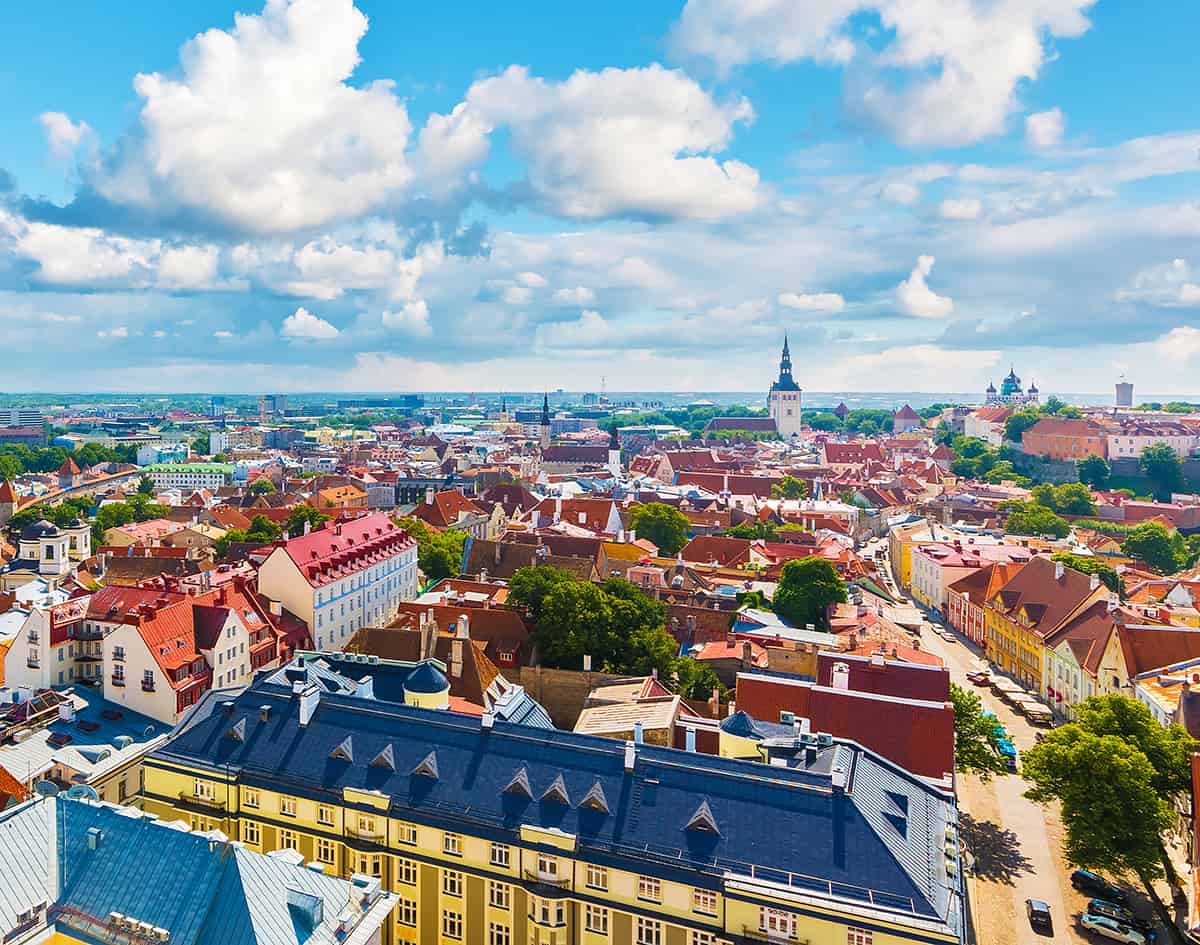The digital economy continues to drive Estonia’s economic growth.
Estonia, for decades the most economically dynamic of the three former Soviet Baltic republics, is rapidly evolving into one of the strongest digital and innovative minnow economies within the EU. Estonia has, since its independence from the Soviet Union in August 1991, replaced a creaking agricultural economy with a vibrant next-generation infrastructure powered by flat-tax policies to attract foreign investment and grow indigenous wealth.
Against the backdrop of its ever-digitalizing economy and of regional investment funds accessible due to its EU membership, Estonia continues to strengthen its reputation as a hotbed for innovation in emerging industrial and financial technologies such as cybersecurity, 6G telecommunications, artificial intelligence (AI), blockchain and cryptocurrencies.
Prime Minister Kaja Kallas’ liberal-center coalition government, which took office in April 2023, has started reforming fiscal policies to bolster Estonia’s image as a modern, open, cost-efficient, and tax-friendly European economy that offers talented technologists across the spectrum.
The Kallas administration’s plans to reform taxes and incentives to develop Estonia’s long-term potential as a leading hub for next-generation technologies and innovation have been complicated by Russia’s invasion of Ukraine in February 2022.
The government issued €1 billion worth of 10-year bonds in January 2024, a large part of which will be used to cover this year’s budget deficit.
“We expect the national budget will carry a deficit in 2024. Proceeds from the bond will cover around half of our borrowing needs this year. It is satisfying that there is strong international interest in the issue,” says Sven Kirsipuu, the Ministry of Finance’s deputy secretary general.
Estonia had previously issued €3 billion in long-term bonds between 2020 and 2023. The last issue was in June 2023, carrying an interest rate of 3.62%.
The Estonian bond issue program enables the government to free up funds to finance important tax reform, infrastructure, AI and digitalization, and market-efficiency programs. Pivotal projects requiring large-scale funding include the Rail Baltica and Nordic-Baltic Hydrogen Corridor.
| Vital Statistics |
| Location: Northeastern Europe |
| Neighbors: Finland, Russia, Latvia |
| Capital city: Tallinn |
| Population (2024): 1.32 million |
| Official language: Estonian (25% of its citizens are ethnic Russians) |
| GDP per capita (2023): $31,000 (estimated) |
| GDP growth (2023): -2.3% (estimated) |
| Inflation (2023): 10% (estimated) |
| Currency: Euro |
| Investment promotion agency: Estonian Investment Agency |
| Investment incentives available: Estonian government provides grants and financial incentives with no distinction between foreign and domestic investors. Grants and co-financing for clean energy, energy efficiency, and circular-economy projects. Tax breaks available for major investments. Companies reinvesting profits not required to pay taxes. |
| Corruption Perceptions Index rank (2023): 12/180 |
| Political risk: Russia’s invasion of Ukraine significantly affected Estonia’s national economy and society. Tensions rising with Russian-speaking minority. Stable pro-EU coalition government. |
| Security risk: Russia’s proximity and continued war have destabilized Estonia’s national security and economic growth. EU and NATO memberships provide significant tools for national economy and security. |
| Credit Rating: BB- Outlook Negative (Fitch Ratings) |
| Political Risk: Civil protests are common but political stability is intact following the ruling party’s 2024 election victory, albeit amid criticism of authoritarianism and a slide into one-party rule |
| Security Risk: Ongoing risks of opposition BNP-orchestrated violence and terrorist attacks. |
| Pros |
| Highly digitalized |
| Flat tax of 20% |
| Undistributed profits not subject to taxation |
| Modernizing and globalizing state within EU |
| Highly educated, skilled labor force |
| Large pool of IT-skilled talent |
| Low cost, tax-friendly for domestic and foreign-owned startups. |
| Cons |
| Small, open economy remains susceptible to external factors like key markets in EU, Asia and North America |
| High dependence on a few EU countries |
| Susceptible to sharp rises in commodity prices |
| Russia a concern for governments hoping to attract foreign investment |
| Shortage of skilled and unskilled labor |
For more information on Estonia, check Global Finance’s Estonia GDP report.
Attractive Taxation
The Kallas administration aims to simplify the tax codes and create a more business-friendly and competitive environment. For companies, the reform will reduce time spent on complying with tax rules, and it will provide benefits for enterprises that do not pay corporate income tax on reinvested and retained profits.
The country applies a corporate income tax rate of 14% to 20% on distributed profits. Under the government’s tax reform, a unified 22% tax rate will be levied on distributed profits starting in January 2025.
The country’s tax system lets companies reinvest their profits tax-free while using capital and earnings to grow businesses faster and with a lower cost burden. The present rate of personal income tax is set at 20%. This will rise to 22% in January 2025.
In Estonia, property tax applies only to the land’s value rather than to the value of real estate or capital. Generally, Estonia exempts 100% of a company’s foreign-earned profits from domestic taxes provided it is headquartered in, or has a subsidiary registered in, the country.
Growing Green
In its National Recovery and Resilience Plan, the Kallas government has identified sustainable energy and green-transition technologies (greentech) as prime areas for investment and development. International companies are attracted by Estonia’s ability to tap into the EU’s European Just Transition Fund (EJTF) and other regional funds.
Neo Performance Materials, a Canada-based producer of industrial rare earth magnetic metals, alloys, and powders, is building a €100 million factory in the northeastern city of Narva. The EJTF will fund around €19 million, which will help supply magnets to manufacturers of electric vehicles and wind turbines.
Estonia’s long-term plan to establish a major greentech hub has also attracted the attention of Hastings Technology Metals. The Australian group is collaborating with the state-run Estonian Investment Agency (EIA) to develop a rare earth hydrometallurgical plant in Estonia’s northeastern Ida-Viru County.
“The establishment of such a plant would help to further develop the value chain of permanent magnets and electrification that is already operating here and would support Estonia’s and the European Union’s ambition to achieve climate neutrality,” said Joonas Vänto, head of the Estonian Investment Agency (Invest Estonia), on the organization’s website. “Currently, there is no sustainable permanent magnet production capacity in the EU to support the increased demand for wind turbines, electric cars, robotics and more.”
Boosting Defense
Estonia’s fledgling defense sector contributed little to the national economy since the country’s independence. Nonetheless, this all changed in 2020, when the government started to develop a Smart Defense sector—in line with NATO’s Smart Defense initiative, a collaborative effort to increase the member states’ capabilities and their ability to operate efficiently together.
The country’s defense industry generated $220 million in 2020, with 35% of production exported. In 2023, turnover reached $320 million, with 60% of production going to export markets.
The Ukrainian War has accelerated defense production and revenue. The war generated widespread panic among the Baltics, despite being NATO members.
The universal concern among the NATO allies is that Russia could seek to militarily reclaim territories it lost in the breakup of the Soviet Union.
International interest has developed around the government-backed defense building program. In February 2023, Edge Group, a defense conglomerate based in the United Arab Emirates, acquired a 50% ownership in Estonia’s defense industry flagship company Milrem Robotics, Europe’s leading developer of robotics and autonomous systems.
The expansion of Estonia’s Smart Defense industry also has opened international markets for Marduk, a producer of electrooptical anti-drone platforms used by Ukraine’s armed forces.
“We are building expertise in Estonia and experiencing strong growth in the face of new market opportunities overseas,” says Leet Rauno Lember, Marduk’s chief operating officer.
A Digital-Innovation Dynamic
As one of Europe’s most digitalized countries, Estonia continues to strengthen its tech ecosystem. Its small-to-midsize tech sector raised a record $85 million from early-stage funding rounds in 2023.
The EIA estimates that the country has 2.3 fintech unicorns per million per capita, which is punching above its weight.
State programs promote digital innovation and invest in specialized IT-centric university programs, emphasizing areas such as blockchain, big data analytics, AI, cybersecurity, automation, robotics and open-source computing.
Demand for top-skilled graduate talent active in digital asset exchange, digital lending, enterprise technology provisioning, digital payments, wealth management, and digital capital raising is projected to increase dramatically by 2030. Estonia’s fintech sector grew to 310 companies in 2023 from 264 companies in 2022.
“Estonia has solid foundation structures and a clear outlook to ensure the country remains an attractive choice for tech investors everywhere. Our national development strategy, particularly the Digital Agenda 2030, sets out an ambitious plan to advance digital literacy, cybersecurity, and public e-services,” says EIA’s Vänto.
The Digital Agenda 2030 strategy is joined to far-reaching research and development (R&D) programs and is expected to establish 500 deep-tech startups. The government anticipates that state-led R&D funding, as a share of GDP, will surpass 1% by 2035.




